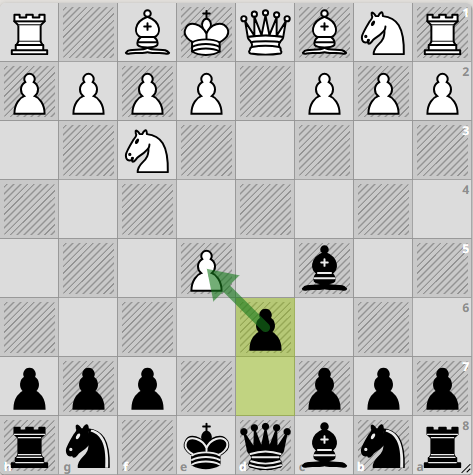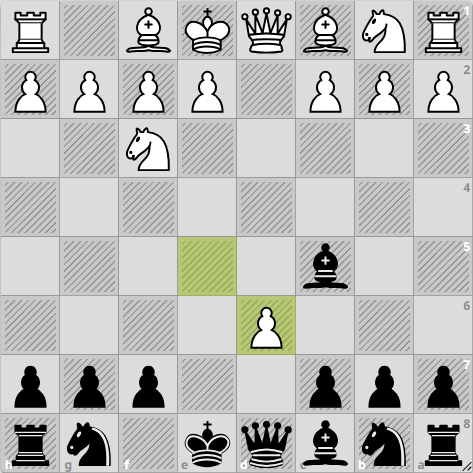So, your opponent starts the game with 1. d4.
It is the Queen’s pawn opening and usually means you’re in for a long, slow, strategic play where no one does anything exciting for 20 moves. But what if I told you that you could turn their solid little pawn push into a trap that wins you their queen in eight moves?
Yes. A queen. And no, this isn’t clickbait. It’s the Englund Gambit, and more specifically, the Derek Wu Trap, which Intentional Master Eric Rosen (the master of traps) helped make famous.
Let’s walk through it. If you’re the type who likes chaos, this one’s for you.
Step 1: White plays 1. d4

This is the Queen’s Pawn Opening. It helps White take control of the center and prepares for a solid structure. It also prevents Black from playing an early e5, which is why many players prefer it over 1. e4. It is safe and reliable.
Step 2: You reply with 1… e5

Here is where things get interesting. Playing e5 against d4 is known as the Englund Gambit. You are offering a pawn right away, aiming to unbalance the position and create fast attacking chances. Most players will take the pawn without hesitation.
Step 3: White plays 2. dxe5 and you respond with 2… Bc5

Almost everyone accepts the gambit. It looks like a free pawn and there is no immediate danger. So far, White thinks they are just ahead in material and developing normally.
Then you bring out the bishop to c5. This move looks harmless but it is the beginning of a trap. The bishop targets the f2 square and subtly sets the tone for what is coming. White will likely continue developing as usual.
Step 5: White plays 3. Nf3 and you play 3… d6


This is the most common response. It is natural and develops a piece while defending the center. Most players will not sense any threat here and are still thinking they are simply a pawn up. You push the d-pawn, giving the impression you are trying to recover the e5 pawn. White often continues to take material because why not?
After exd6, now it looks like White is up two pawns. From their perspective, things are going smoothly. But your setup is nearly complete.
Step 7: You play 4… Ne7

You bring the knight to e7. The knight is not attacking anything and your opponent might assume it is a blunder. Many players will take the knight without thinking twice.
5. dxe7
White captures the knight and now believes they are completely winning. They are threatening to promote the pawn or capture your queen. But this is where everything turns around.
Step 8: You play Bxf2+ and spring the trap


You sacrifice the bishop with check. White has no choice but to take with the king.
6. Kxf2
And now the queen is hanging.
6… Qxd1
Just like that, you have taken White’s queen and flipped the game completely. The moves made by White looked safe and logical but they were all part of the trap.
Why this trap works
Every move White makes seems natural. They take material and develop their pieces in a normal way. That is why this trap is so effective. It is not built on hoping for a huge mistake. It works because most players do not look deeply into the consequences when they think they are ahead. However, players rated above 1800 elo can find it easily.
Bonus Puzzle – Stop reading, and find the best move for black after Ne2

At this position, they have equal material.
However, if white retreats with Ne2 with an idea to attack and win the bishop. What are you going to do?
You will simply sacrifice the bishop with Bxf2+ and win a queen easily!
Winding up
Even if your opponent plays more cautiously and does not fall for the exact trap, the Englund Gambit still leads to open, active positions and down a pawn will not give you must trouble. You get rapid development and early pressure, which is often enough to throw d4 players off their game.
Keep following The New England Chess School to learn more sneaky traps like this one!